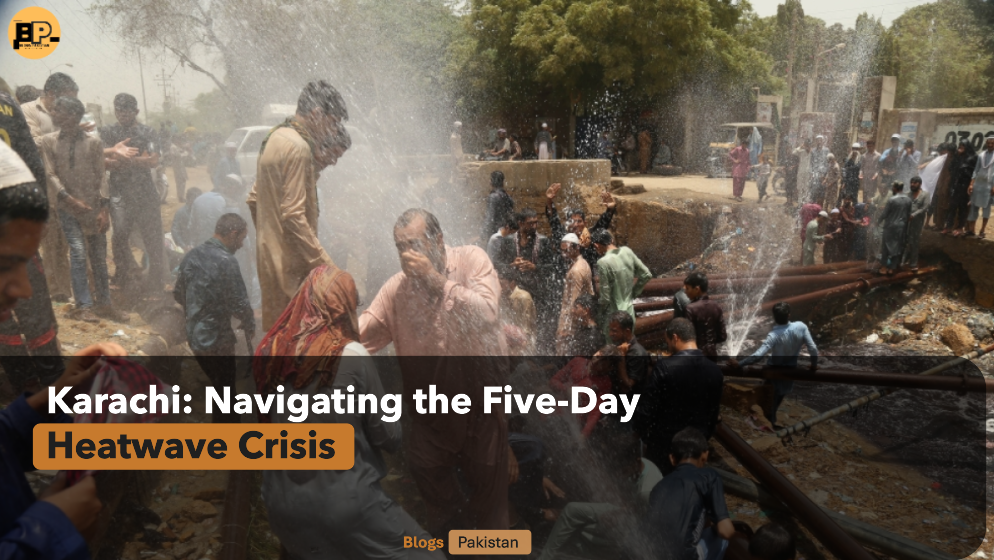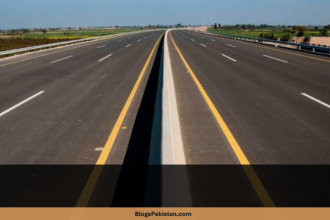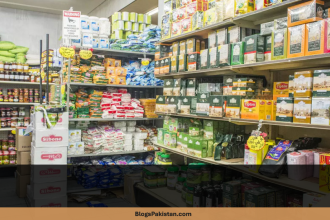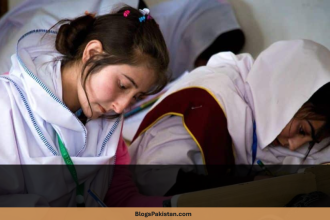As the sun blazes relentlessly over Pakistan’s coastal metropolis, Karachi braces itself for an intense five-day heatwave. The Pakistan Meteorological Department (PMD) issued a stern alert, warning residents of soaring temperatures compounded by suffocating humidity. With daytime highs expected to hit 35°C and “feels-like” temperatures surging to 40°C, the city’s 20 million inhabitants face a week of grueling conditions.
Why This Heatwave Is Different: Humidity’s Deadly Grip
The Stealthy Threat of Wet Bulb Temperatures
Unlike dry heatwaves, Karachi’s current crisis is amplified by humidity levels hovering between 70% and 80%. Meteorologists emphasize that moisture-laden air drastically reduces the body’s ability to cool itself through sweat evaporation. This phenomenon, known as wet bulb temperature, turns even moderately high temperatures into life-threatening conditions.
“When humidity exceeds 60%, every degree Celsius feels significantly hotter,” explains climatologist Dr. Amina Sheikh. “Karachi’s ‘real feel’ temperatures could exceed official readings by 4–6°C, creating a furnace-like environment.”
Who’s Most at Risk?
Vulnerable Groups in the Crosshairs
The PMD’s warning singles out three high-risk categories:
- Senior citizens (reduced thermoregulation capacity)
- Children under five (rapid dehydration risk)
- Outdoor laborers (construction workers, street vendors, and delivery personnel)
Dr. Faisal Khan of Jinnah Hospital reports a 30% spike in heat exhaustion cases already. “We’re seeing patients with core body temperatures of 104°F—this can lead to organ failure if untreated,” he states.
Heatwave Survival Toolkit: Beat the Heat Before It Beats You
Reinvent Your Cooling Strategies
Upgrade Your Hydration Game
- Preemptive drinking: Consume 250ml water hourly, even without thirst signals
- Electrolyte boosts: Alternate plain water with coconut water or oral rehydration salts
- Hydration hacks: Freeze fruit slices into ice cubes for slow-release cooling
Smart Clothing Choices Matter
- Fabric science: Opt for moisture-wicking bamboo or cotton-linen blends
- Color psychology: Wear light-reflecting whites and pastels instead of dark hues
- Accessorize wisely: Wide-brimmed hats with UV protection and cooling neck gaiters
Rethink Your Daily Schedule
![A digital thermometer showing 40°C with sun rays in the background]
Alt Text: Extreme heatwave temperatures demand smart scheduling of outdoor activities
- Peak sun avoidance: Reschedule errands to pre-9 AM or post-6 PM slots
- Micro-cooling breaks: Implement 15-minute AC/fan breaks every two hours
- Tech-assisted planning: Use weather apps to track hourly heat index fluctuations
Karachi’s Emergency Response Blueprint
Municipal Measures in Action
City authorities have activated Phase 2 of their Heat Action Plan:
- Extended operating hours for public cooling centers
- Emergency water tankers deployed to informal settlements
- SMS alert system broadcasting real-time heat index updates
“We’ve trained 500 community health workers to identify heatstroke symptoms,” says Commissioner Syed Hassan Naqvi. “Mobile clinics will patrol high-risk areas during peak hours.”
The Climate Change Connection
Are Karachi’s Heatwaves the New Normal?
Environmental scientists point to alarming trends:
- 62% increase in extreme heat days since 2015
- Arabian Sea surface temperatures rising 0.5°C per decade
- Urban heat island effect magnified by concrete sprawl
“Karachi’s 2022 heatwave claimed 78 lives,” notes urban planner Zara Ahmed. “Without green infrastructure investments, these events will intensify.”
Tech-Driven Heat Safety
Harness Digital Tools for Protection
- PMD Heatwave Tracker: Real-time neighborhood-specific risk ratings
- Heat Health Watch: SMS alerts for elderly residents (text ‘HEAT’ to 1771)
- Crowdsourced shade maps: User-generated reports of cool public spaces
![Smartphone displaying heatwave alert app with temperature notifications]
Alt Text: Digital tools help Karachi residents monitor heat dangers in real-time
When the Body Sounds the Alarm
Recognizing Heat Illness Red Flags
Stage 1 – Heat Cramps
- Muscle spasms in legs/abdomen
- Cool pale skin with goosebumps
Stage 2 – Heat Exhaustion
- Throbbing headache
- Rapid weak pulse
- Nausea or vomiting
Stage 3 – Heatstroke (Medical Emergency)
- Body temp above 103°F (39.4°C)
- Confusion or slurred speech
- Loss of consciousness
“If someone stops sweating in extreme heat, call emergency services immediately,” warns Dr. Khan.
Urban Innovations for Thermal Relief
Karachi’s Experimental Cooling Solutions
- Water mist tunnels at major transit hubs
- Reflective paint projects on 50+ rooftops
- 24/7 hydration stations offering chilled lassi and sattu drinks
The city’s parks department has also initiated “Cool Corridors”—tree-lined walking paths with shaded seating every 200 meters.
The Economic Burn
Heat’s Hidden Toll on Productivity
- 18% drop in construction output during previous heatwaves
- 23% surge in electricity demand strains power infrastructure
- 15% increase in perishable food spoilage
Street vendor Muhammad Riaz shares, “My ice stock melts by noon—I lose Rs. 2,000 daily when temperatures spike.”
As Karachi navigates this thermal challenge, the convergence of individual preparedness and systemic action becomes crucial. From the fisherman in Keamari to the office worker in Clifton, the city’s resilience faces its sternest test yet.










